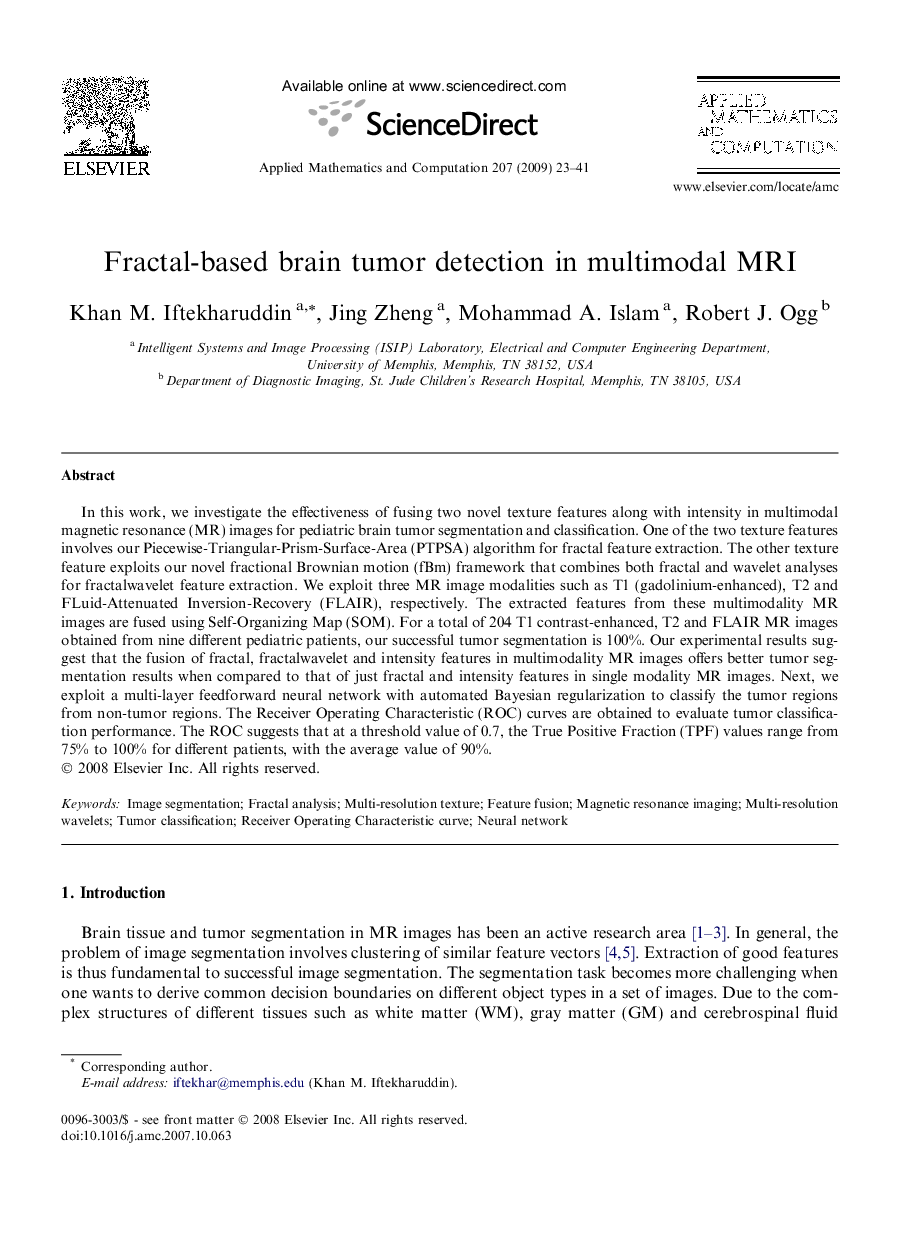| Article ID | Journal | Published Year | Pages | File Type |
|---|---|---|---|---|
| 4633671 | Applied Mathematics and Computation | 2009 | 19 Pages |
In this work, we investigate the effectiveness of fusing two novel texture features along with intensity in multimodal magnetic resonance (MR) images for pediatric brain tumor segmentation and classification. One of the two texture features involves our Piecewise-Triangular-Prism-Surface-Area (PTPSA) algorithm for fractal feature extraction. The other texture feature exploits our novel fractional Brownian motion (fBm) framework that combines both fractal and wavelet analyses for fractalwavelet feature extraction. We exploit three MR image modalities such as T1 (gadolinium-enhanced), T2 and FLuid-Attenuated Inversion-Recovery (FLAIR), respectively. The extracted features from these multimodality MR images are fused using Self-Organizing Map (SOM). For a total of 204 T1 contrast-enhanced, T2 and FLAIR MR images obtained from nine different pediatric patients, our successful tumor segmentation is 100%. Our experimental results suggest that the fusion of fractal, fractalwavelet and intensity features in multimodality MR images offers better tumor segmentation results when compared to that of just fractal and intensity features in single modality MR images. Next, we exploit a multi-layer feedforward neural network with automated Bayesian regularization to classify the tumor regions from non-tumor regions. The Receiver Operating Characteristic (ROC) curves are obtained to evaluate tumor classification performance. The ROC suggests that at a threshold value of 0.7, the True Positive Fraction (TPF) values range from 75% to 100% for different patients, with the average value of 90%.
